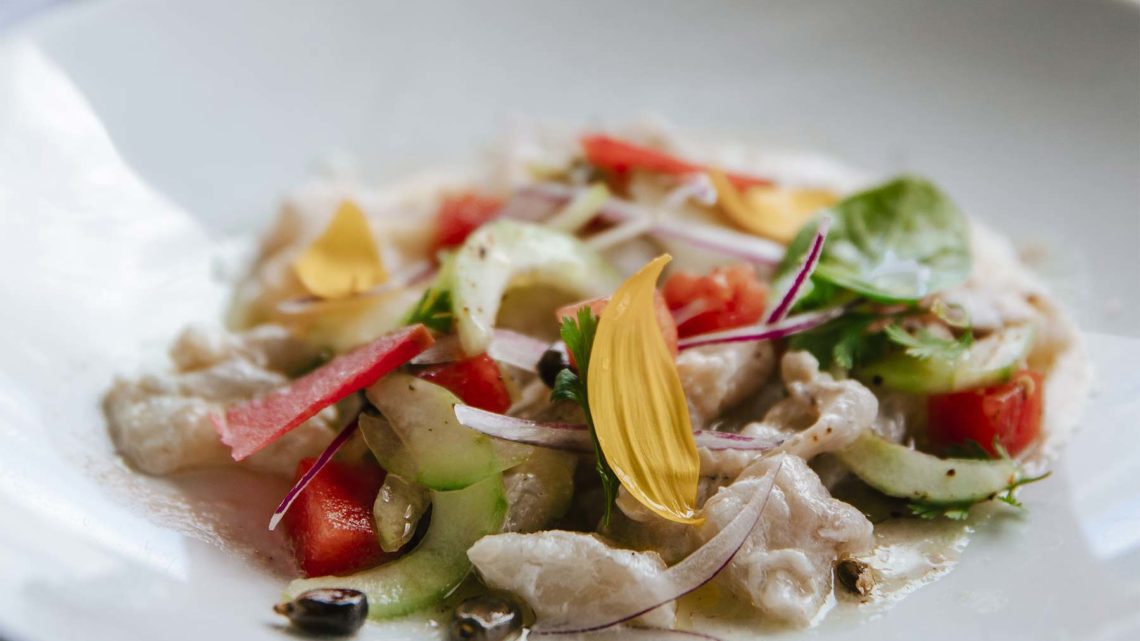
The cooking technique of Ceviche
Ceviche, originally from Peru, is a dish of raw fish marinated in lime juice, enhanced with onions, chillies and coriander, varied according to region, and ideal with a dry white wine.
The technique of Ceviche
Brief history of Ceviche and its origin (Peru):
Ceviche, with varying spellings such as cebiche or seviche, hails from Peru with a rich history stretching back over 2000 years. Initial versions of ceviche were crafted using fresh fish marinated in the juice of the local tumbo fruit. The introduction of citrus fruits by the Spanish transformed lime juice into the key marinating ingredient.
Significance and popularity of ceviche in global gastronomy:
Ceviche today stands as a hallmark of South American cuisine, its simplicity, freshness, and vibrant flavors gaining immense popularity well beyond Peruvian borders.

Basic Ingredients
Fresh fish (commonly used types):
At the heart of ceviche is fish, which must be ultra-fresh. Common choices include sea bass, grouper, flounder, or snapper.
Lime (for acid-cooking):
Lime juice acts to “cook” the fish, altering its texture without the use of heat. This acidity also brings a fresh, zesty flavor to the dish.
Red onions, chili peppers, cilantro:
Red onion offers crunch and a touch of bitterness, while chili peppers introduce heat. Fresh cilantro provides a quintessential herby flavor.
Salt and potentially other seasonings:
Salt amplifies flavors and aids in “cooking” the fish. Additional seasonings, like garlic or ginger, might be added based on personal preferences.
Choosing the Fish
The importance of using ultra-fresh fish:
For a successful ceviche, the fish must be as fresh as possible, given it’s consumed raw, and both its flavor and texture play pivotal roles.
Recommended fish types and those to avoid:
Firm-fleshed fish like grouper or sea bass are ideal. Avoid fatty or overly soft fish that might disintegrate in the marinade.
Acid “Cooking”
Explanation of the chemical process:
Acid “cooking” isn’t traditional cooking. Citrus juice denatures the fish’s proteins, changing its texture and color as heat would.
Recommended duration and how to tell when ceviche is ready:
Typically, marinating fish for 15 to 30 minutes is sufficient. It’s ready when the flesh becomes opaque and looks “cooked” on the outside.
Regional Variations
Differences between Peruvian, Mexican, Ecuadorian ceviches, etc.:
While Peruvian ceviche is most famed, every country has its twist. For instance, in Mexico, it’s common to include tomato, while in Ecuador, it’s often paired with popcorn.
Other popular ingredients:
Sweet potato, roasted or boiled corn are traditional sides in Peru. Elsewhere, additions might include avocado, tropical fruits, or seaweed.

Tips for Optimal Tasting
Serve shortly after preparation:
To fully relish the freshness of ceviche, it’s recommended to serve it soon after making.
Traditional accompaniments:
Apart from sweet potato and corn, ceviche can be paired with tortilla chips or tostones (fried plantains).
Wines and associated beverages:
A dry white wine, like Sauvignon Blanc, complements ceviche perfectly. For a non-alcoholic option, a citrusy or coconut-based drink is ideal.